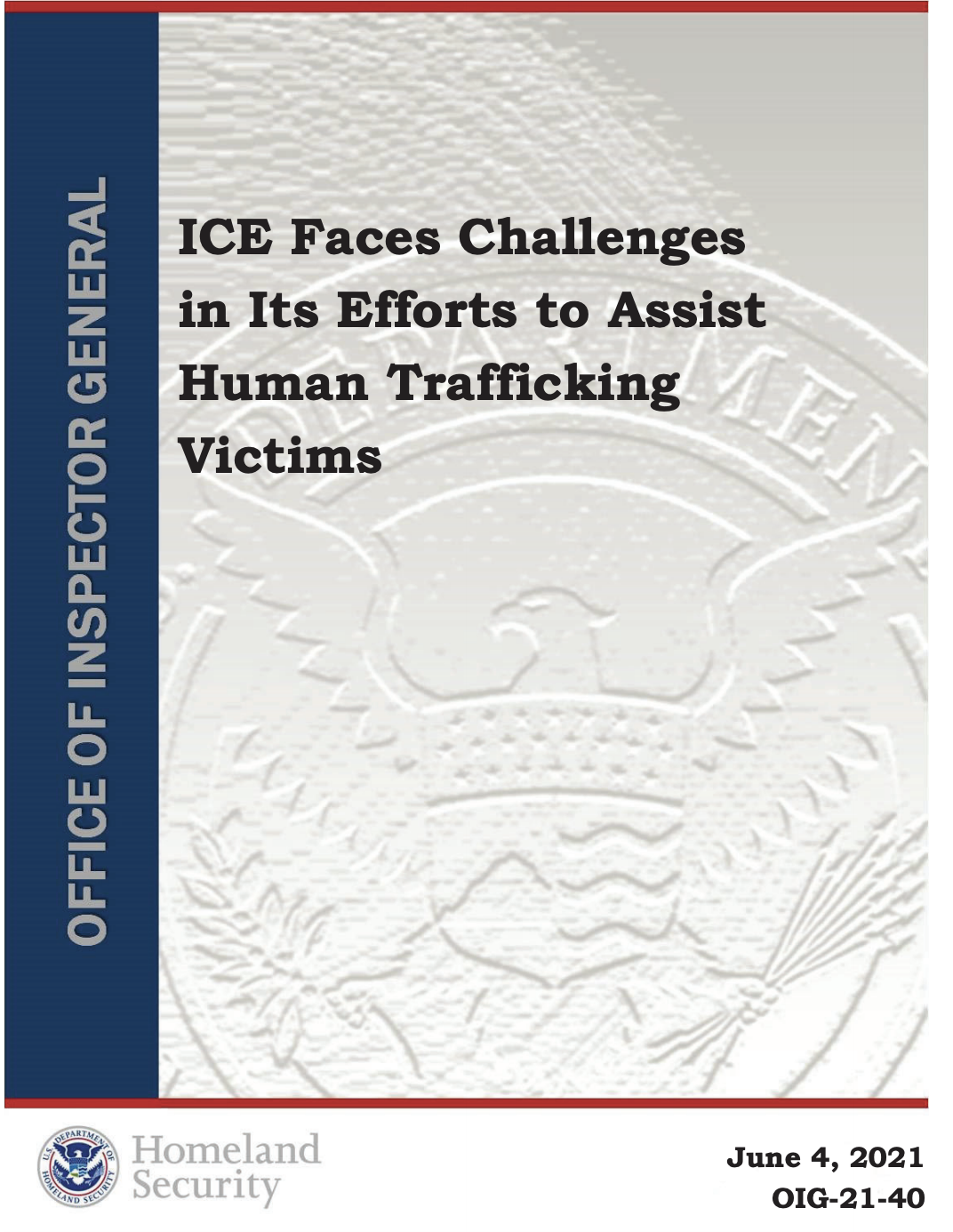
ICE Faces Challenges in Its Efforts to Assist Human Trafficking Victims
What We Found
ICE did not adequately identify and track human trafficking crimes. Specifically, ICE Homeland Security Investigations (HSI) did not accurately track dissemination and receipt of human trafficking tips, did not consistently follow up on tips, and did not maintain accurate data. Additionally, HSI special agents did not consistently and properly maintain human trafficking case files from initiation to closure. Finally, we found several examples of incomplete and inaccurate victim assistance data. These issues occurred because HSI did not have a cohesive approach to carrying out its responsibilities in combating human trafficking. Instead, independently managed program offices with partial responsibilities created challenges for HSI to coordinate and oversee human trafficking efforts. As a result, HSI may have missed opportunities to assist and save victims and support U.S. Attorneys in their prosecution efforts. Additionally, by relying on inaccurate data, ICE may not be allocating funds or resources in the most efficient manner and could be miscalculating human trafficking statistics.
Background
The prevalence of human trafficking is an urgent humanitarian issue with direct and far-reaching consequences. It is an extremely lucrative illicit activity with estimated annual global profits of $150 billion.1 Human trafficking threatens the Nation’s physical and virtual borders, prosperity, and national security, and directly attacks Americans’ personal safety. According to DHS’ website, every year, millions of men, women, and children of any age, race, ethnicity, gender identity, nationality, immigration status, cultural background, socio-economic class, and education level are trafficked worldwide, including in the United States. Traffickers use various forms of force, fraud, and coercion to control and exploit victims. Human trafficking involves a trafficker compelling a victim to engage in labor or services or a commercial sex act through force, fraud, or coercion. Sex trafficking can range from escort services to outdoor solicitation to personal sexual servitude, among other forms. Anyone under 18 years old compelled to engage in a commercial sex act is a victim of child sex trafficking. Labor trafficking occurs across many different industries, such as agriculture, domestic work, hospitality, food services, and health and beauty services. Human trafficking may intersect with other criminal activities, such as drug and arms trafficking, corruption, money laundering, domestic violence, rape, and sexual assault. Traffickers can be relatives or friends and may operate alone or as part of gangs or transnational criminal organizations. They may use violence, manipulation, false promises of well-paying jobs, or romantic relationships to lure victims into trafficking situations. Various executive orders and laws prioritize combating human trafficking and protecting victims. These include Executive Order 13773: Enforcing Federal Law with Respect to Transnational Criminal Organizations and Preventing International Trafficking (February 2017) and the Victims of Trafficking and Violence Protection Act of 20002 and its subsequent reauthorizations. As part of its homeland security mission and in coordination with other agencies, DHS is responsible for investigating human trafficking crimes, arresting traffickers, and protecting victims, as well as enforcing victim protection laws to combat human trafficking. According to DHS, identifying, protecting, and saving victims is just as important as investigating and prosecuting traffickers.
Read the entire report here.
